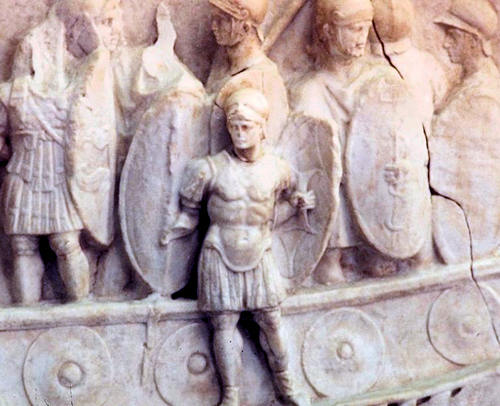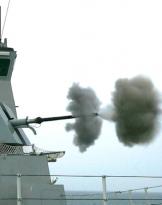Often, not only in the naval field, there is confusion between title e degree. With title means the term to designate people who, at different levels, perform certain functions on board a ship. Specifically, this appellation can be assigned temporarily, or used only in the period of coverage of an assignment, or permanently such as for example for ship officers who have held the position of commander aboard naval units. Instead we talk about degree to define the hierarchical level of an officer or a graduate within a military organization during his career.
This confusion makes hierarchies in the maritime field quite complicated for a non-expert, sometimes presenting individuals with different ranks and similar titles.
To better understand these structures it must be stated that, in naval history, the organization of military and merchant marines did not always travel on parallel tracks as sailors could, depending on the moment, have functional tasks in one or the other.
 We could say that when the State was based for its survival on a thalassocracy (military and commercial domination of a maritime space and of the territories contained therein or bordering on it - ed) needed to create military structures with a precise identity, governed by strict regulations that guaranteed the internal bureaucratic system a careful management of their needs. In this case often the set of naval forces and logistical support forces was one within the different navies.
We could say that when the State was based for its survival on a thalassocracy (military and commercial domination of a maritime space and of the territories contained therein or bordering on it - ed) needed to create military structures with a precise identity, governed by strict regulations that guaranteed the internal bureaucratic system a careful management of their needs. In this case often the set of naval forces and logistical support forces was one within the different navies.
Where, on the other hand, there was no need for a regulated military organization, the borders with the merchant world thinned, often creating a certain anarchy in the functions; in that case the sailors were transformed, according to the circumstances, into merchants, pirates, corsairs or occasional soldiers. We will see how, after the classical era, we had to get to the eighteenth century to rediscover Marines managed by professional officers with precise and binding regulations.
The Roman Organization
In ancient times, the commander of the military fleet, where it existed, was a politically appointed senior figure who employed naval units of various types commanded by officers who made use of specialists for their conduct.
According to Carro, since the time of Augustus all the emperors - except Claudius and Nero - reserved the command of the imperial fleets to praefecti of equestrian rank chosen mainly from the Italian aristocracy. Perhaps the most important among them was the commander of the Classis Misenensis based in Miseno with subordinate commanders (subpraefecti) and commanders of the naval banners (praepositi vexillationis). This structure, which we could define of general staff, managed the commanding officers of the fleet units, called navarchi e trierarchs. navarcus, as the trierarcus, was a term of Hellenic derivation, already used in the Greek poleis as head of the military fleet. Not surprisingly, at least initially, many commanders of the Roman fleet came from the eastern provinces.

In the pragmatic Roman organization, in which the fleets were suitably redistributed in different geographical areas of gravitation, the Navarch he often commanded several ships led in turn by trierarchs and made use of specialists including the pilot who governed the rudder and maneuvers. The Navarcus, by analogy with the Roman army, had the military rank of centurion as any warship was equivalent to a centuria, even if their economic treatment was less.
 After having eradicated the threat of pirates, as there were no competing maritime powers, the Roman fleet lost imperial attention over time. Only in the late empire, the renewed danger along the routes brought back the need to refresh the naval instruments.
After having eradicated the threat of pirates, as there were no competing maritime powers, the Roman fleet lost imperial attention over time. Only in the late empire, the renewed danger along the routes brought back the need to refresh the naval instruments.
In particular, it was the Byzantines who reconstructed an efficient organization to counter the new threat facing the eastern seas. From the XNUMXth century the Byzantine fleet was commanded by one stratēgos (stratēgos tōn karabōn/karabisianōn, “general of ships/seafarers”), responsible for the defense of the coasts up to the border with the Caliphate at Seleucia in Cilicia, the Aegean islands and the imperial possessions in southern Greece. A task that therefore included not only the efficiency of the ships but also the training of personnel. The stratēgos he had two or three in his employ tourmarchai (“vice admirals”), who made use of a certain number of droungarioi (“sub-admirals”) distributed in subordinate commands.
The lower levels of organization comprised squadrons of three or five ships under the command of a komēs or droungarokomēs, and each ship was commanded by a captain called a kentarchos (derived from the word "centurion"). Sometimes, in literary sources, these commanders were still called nauarchos or triērarchos.
It was interesting to see how marine terms, of different origins, mixed in that large Mediterranean lake. For example the word captain, from the Latin caput, boss, or "who is in the lead" that we find in many terminologies in all navies, sometimes took on very different meanings, and is still in use today.

The use of the same titles for different functions created a profound organizational discrepancy which over time led to the need to establish ever more precise rules to frame the duties and responsibilities of the personnel in command and management of the maritime forces.
It is important to understand that these regulations assigned duties but also established rules for all personnel which included military and social behavioral norms, the wearing of the same uniform and ranks to recognize different ranks.
Read: "The maritime organization in ancient times (second part): XVII-XVIII century"
Photo: web
(article originally published on https://www.ocean4future.org)












